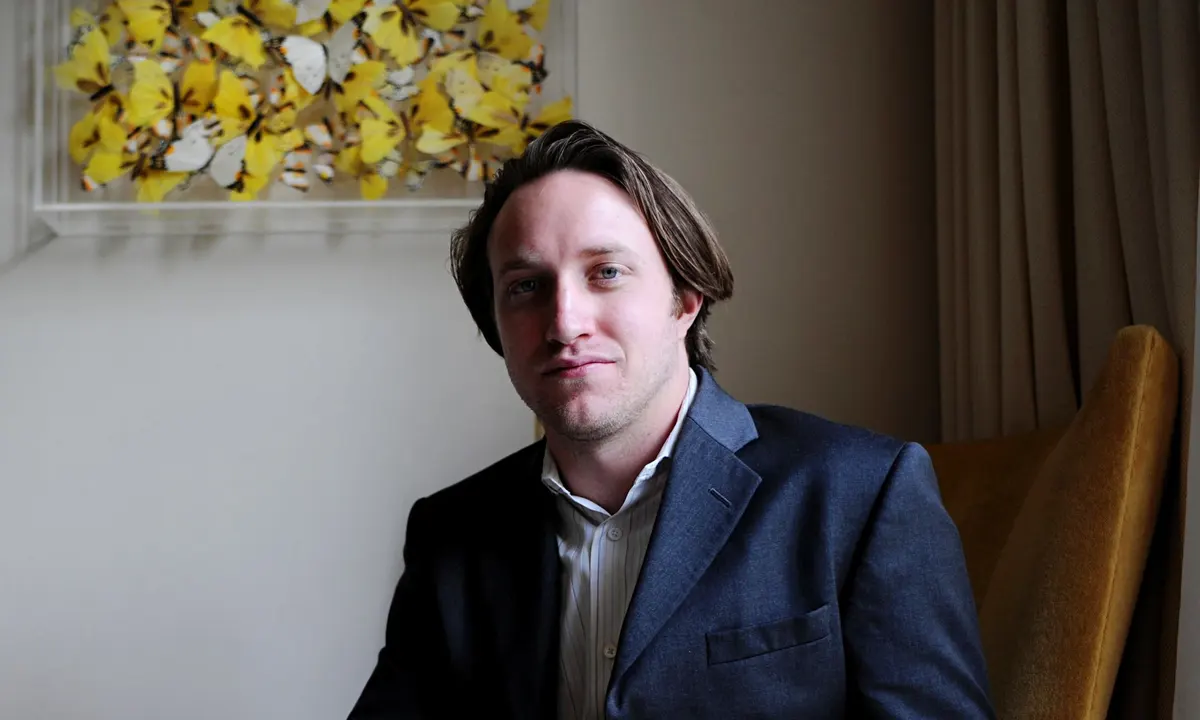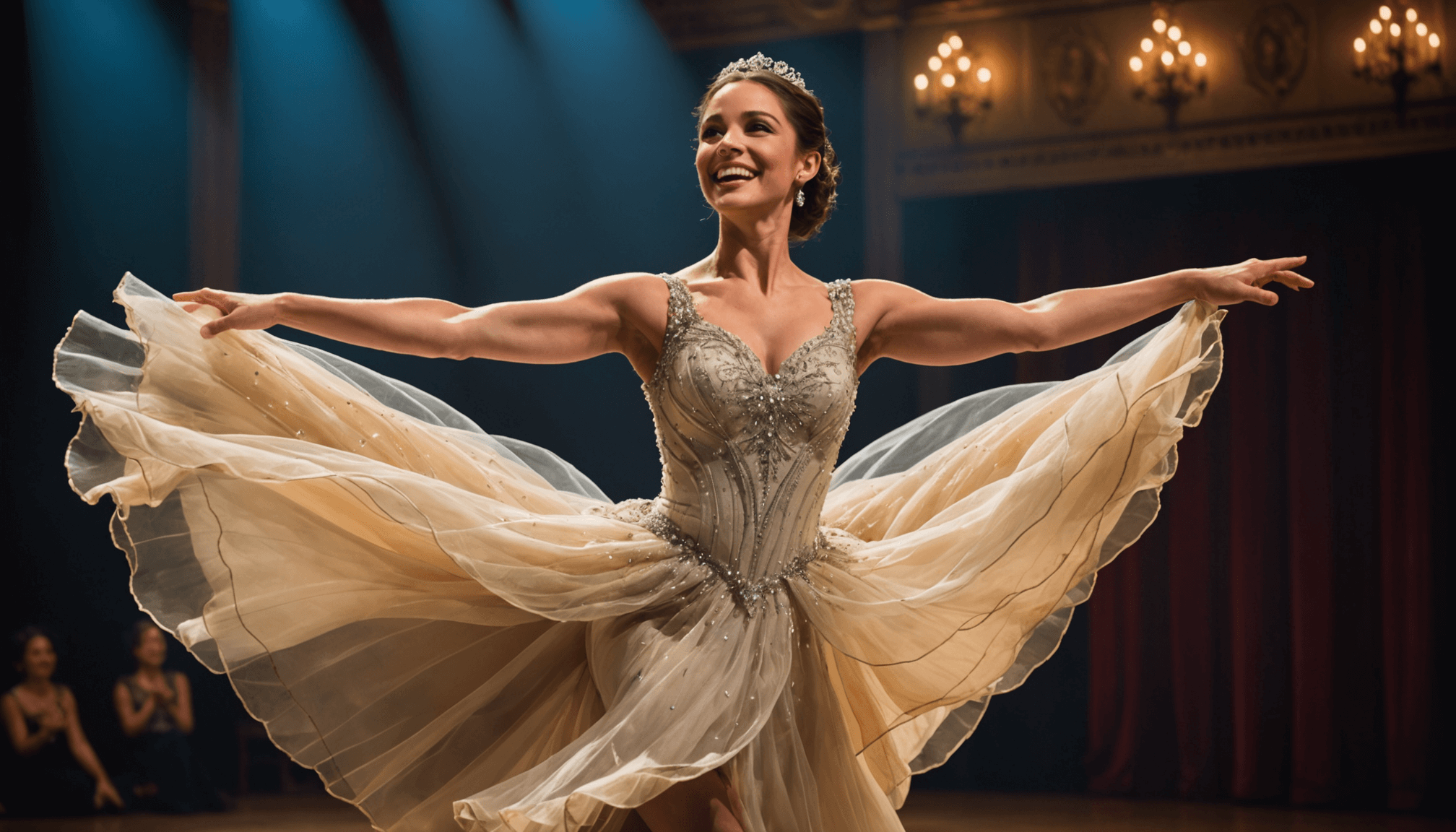Alice Marrow: Unveil Your Unique Path in Adult Lifestyles


Uncertainty is a constant companion as we navigate adulthood. Maybe you’re staring at a career crossroads, facing an unexpected loss, or wrestling with society’s blueprint for success. What does it truly mean to “become” an adult? For many, the question sits just beneath the surface: Am I doing this right? The funny thing about growing up is that no two journeys look exactly alike—just ask anyone who’s lived through adversity or charted their own course.
Let’s consider Alice Marrow—a name often misunderstood online but, more importantly, a woman whose life story frames the stakes of adult transformation vividly. As the mother of Tracy Lauren Marrow (better known as Ice-T), Alice carved out her existence amid early 20th-century prejudice and hardship in North Carolina before moving to New Jersey. Her experience stands as both inspiration and challenge: How do we make sense of change when every expectation feels weighed down by history? The upshot is clear: understanding transitions isn’t just about survival—it’s where your distinct values are forged.
This series aims to peel back cultural myths and spotlight what really happens on the road to adulthood—using Alice Marrow’s real-world resilience as both example and guide. If you’ve ever questioned whether your struggles or detours matter, keep reading; here lies not only data but also human proof that forging your unique path pays dividends far beyond social approval.
Understanding Adult Life Transitions: Lessons from Alice Marrow’s Journey
Few stories illustrate the unpredictable arc of adulthood quite like that of Alice Marrow. Born into Louisiana Creole heritage in 1909 Winston-Salem and later widowed in Newark during America’s most turbulent decades, her life was marked by events no textbook could prepare you for.
The problem is, most guides treat adult development like a checklist:
- Graduate school
- Land steady employment
- Start a family
- Save for retirement
The reality? Paths diverge quickly under pressure—from economic downturns to personal loss—and those prescribed milestones rarely arrive on schedule.
| Phase | Typical Challenge | Alice Marrow’s Example |
|---|---|---|
| Youth/Early Adulthood | Navigating education & identity shifts | Cultural roots amidst racial discrimination |
| Maturity/Career Building | Sustaining employment; building stability | Became primary provider after spouse’s death |
| Lifelong Adaptation | Coping with loss; redefining roles | Raised Ice-T alone despite adversity |
The upshot here is sobering yet empowering. No algorithm maps these inflection points perfectly—not even for someone like Alice whose obstacles were unusually steep.
If anything links us across generations and backgrounds, it’s this: Each new phase forces renegotiation between past experience and present demands.
Common Adult Transition Phases Include:
- Leaving Home: The shift from dependence to autonomy can be liberating—or overwhelming.
- Pursuing Work/Careers: Not all jobs fulfill dreams or match degrees; adaptability rules.
- Losing Family/Friends: Bereavement often brings new responsibility and self-discovery.
- Navigating Relationships: Marriage, parenting, divorce—all reshape priorities dramatically.
- Aging/Reinvention: Later-life transitions invite fresh skills but may threaten established identities.
The Impact Of Change On Personal Growth And Societal Expectations Vs Reality In Adult Lifestyles
If there’s one persistent myth underpinning American narratives about adulthood (and indeed global ones), it goes something like this: “You’ll know you’re grown up when…” An endless list follows—career security means maturity; marriage signals completion.
All of which is to say none of those benchmarks account for disruption—the very force driving real growth. Alice Marrow never planned widowhood nor solo parenthood. Yet her resilience produced ripple effects still visible today—not least in her son Ice-T’s global impact on music and culture.
- Pivotal moments bring discomfort—but also opportunity for new purpose.
- Diverging from expected paths doesn’t equal failure—it often drives creativity.
- The gap between societal scripts (“do X by age Y”) vs actual lived timelines creates stress—and room for reinvention.
The high road requires embracing difference rather than hiding it.
So why do so many adults feel lost during transition?
Because our models prize conformity over nuance—and ignore quiet victories won outside public view.
According to Pew Research Center (2024), less than half (46%) of U.S. adults aged 25-50 report following their “expected” timeline for major life events such as career advancement or home ownership.[source] The remainder cite economic shocks or family health crises among top reasons for deviation—which mirrors patterns set by earlier generations like Alice’s.
Your journey may not be featured on magazine covers—but neither was hers. Instead,true personal growth emerges precisely where plans unravel.
To some extent we all stand at similar crossroads—questioning if our choices are enough when measured against collective standards.
In part two (‘Self-Discovery And Personal Identity’) we’ll move deeper into practical strategies—how exploring core values and understanding boundaries helps transform turmoil into lasting confidence.
But first pause here: if uncertainty marks your current chapter, welcome to authentic adulthood—a landscape where uniqueness counts more than perfection ever could.
Questions abound when it comes to navigating adulthood in a way that genuinely honors who you are. How do we forge meaningful relationships while still protecting our own boundaries? Can anyone truly balance ambition with wellbeing, or is burnout an inevitable byproduct of striving for more? What if the stories we’ve been told about career progression don’t match the reality we’re living? These aren’t just theoretical dilemmas. They’re everyday crossroads facing readers searching for their unique path—readers who want practical guidance and not recycled platitudes.
Consider Alice Marrow: her life intersected with adversity, cultural complexity, and the demands of raising a son who would later become one of America’s most distinctive voices in entertainment. Few figures illustrate more starkly how building relationships and forging careers under pressure can shape destinies across generations. The upshot: understanding Alice Marrow’s legacy isn’t just about history—it offers a playbook for contemporary adults trying to carve out meaning in family, work, and self-fulfillment.
Building Meaningful Relationships on Your Own Terms
All of which is to say: the art of connection has never been straightforward. For Alice Marrow, living as a widowed single mother in mid-century Newark came with its share of isolating moments—and yet it was precisely these circumstances that forged resilient bonds within her family.
- Cultivating authentic connections: Many adults today wrestle with superficiality—networking events masquerading as friendships, social feeds curated for appearance over substance. But look back at Alice Marrow’s era: authenticity wasn’t optional; it was survival. Genuine relationships grew from shared struggle and mutual reliance. Her bond with her son Tracy (Ice-T) didn’t emerge from grand gestures but through everyday acts—listening, sacrificing, encouraging.
- Maintaining healthy boundaries: Here lies a delicate balancing act. The problem is, too often modern advice veers into extremes—either self-sacrifice or rigid detachment. Instead, consider boundary-setting as an ongoing negotiation—a high road between open-heartedness and self-preservation.
- Navigating family dynamics: To some extent, every family is both sanctuary and crucible. After her husband Solomon’s death in the early 1950s, Alice shouldered full responsibility—not just financial provision but moral leadership too. The funny thing about family tensions is they often arise less from conflict than unspoken expectations or changing roles over time.
| Modern Challenge | Alice Marrow Era Lesson | Actionable Takeaway Today |
|---|---|---|
| Digital isolation & surface-level contacts | Deep ties born from shared adversity & proximity | Create rituals (meals, calls) fostering real presence over virtual interaction. |
| Difficult conversations avoided due to fear of rejection or drama | Moral guidance delivered directly—even when uncomfortable | Address issues early; prioritize honesty over temporary harmony. |
| Lack of clear personal boundaries leading to overwhelm/burnout | Saying no when resources were scarce protected core priorities. | Practice assertive communication; define non-negotiables gently but firmly. |
If there’s a single lesson running through Alice Marrow’s story—and echoed by countless families striving amid economic uncertainty—it’s this: resilience grows where honest connections meet firm limits. Navigating adult relationships will always be tricky waters—but clarity about your needs alongside compassion for others makes genuine trust possible.
Career And Professional Development: Finding Purpose Amid Competing Pressures
No guide to adult lifestyles would be complete without tackling perhaps the biggest question: what does it mean to build a career that feels purposeful rather than hollow? For many—especially those shaped by hardship like Alice Marrow—the answer isn’t found in titles or salaries alone.
- Finding purpose in work: Consider Ice-T’s trajectory—from street-influenced adolescence to music innovator and acclaimed actor—which owes much to values instilled at home by his mother’s example. The high road here isn’t simply chasing external validation but aligning daily labor with internal convictions.
- Pew Research Center reports (2023) show that only 49% of US workers describe their jobs as “very meaningful,” indicating a broad hunger for deeper vocational fulfillment.[1]
- Balancing ambition and wellbeing: All ambitious paths come at a cost—but ignoring health leads down exhaustion. In practice:
- Pace yourself during periods of high demand;
- Cultivate off-ramps such as hobbies or community service;
- Sustain routines (diet/sleep/exercise) even when deadlines loom large.
- Continuous learning and adaptation: The world shifts quickly; industries rise and fall almost overnight. If anything defined Alice Marrow’s approach—and Ice-T’s creative pivots—it was relentless adaptability:
- The World Economic Forum predicts over half of all employees will require significant reskilling by 2027[2].
Pew Research Center Survey (2023): Percentage of US Workers Who Find Their Job “Very Meaningful” vs “Not Too/At All Meaningful”
This leaves us with two potential futures—the sustainable path where passion informs profession, learning remains constant, and rest becomes part of productivity itself; the unsustainable, ending in monotony or chronic fatigue.
The decision point echoes throughout modern workplaces just as surely as it did around kitchen tables decades ago.
In summary:
- The most sustainable careers blend aspiration with honest assessment—of strengths, limits, and evolving interests;
- Bounce-backs matter more than straight lines;
- Your sense of mission must adapt alongside shifting realities—as true now as it was for families like the Marrows bracing against midcentury headwinds; all roads eventually reward those who keep learning.
Ultimately, whether you’re searching for relationship depth or professional direction, Alice Marrow’s blueprint holds timeless lessons: invest deeply, protect wisely, adapt relentlessly—and never confuse busyness for purpose.Stay tuned as we next explore how identity itself shapes these journeys—including unexpected turning points along your path toward meaning.
What does it actually mean to unveil your unique path in adult lifestyles? For many, the very phrase “lifestyle design” triggers a sense of both possibility and anxiety. On one hand, there’s the allure: control over your time, energy, and wellness—an invitation to break out of inherited routines or expectations. Yet here’s the problem. The reality is far messier than any self-help book would have us believe. Sustainable routines crumble under job changes; wellness promises fade after a tough week; even our best-laid plans face resistance from inside and out. If you’re searching for clear answers on how to create balance—not just aspiration—within an adult lifestyle, you’re not alone.
All of which is to say: the question isn’t whether you should seek balance in adulthood—it’s how you build it when life refuses tidy solutions. In this section we’ll take apart what sustainable routines really look like (hint: they don’t always start with 5am yoga), how adults can manage their finite resources of time and energy without burning out, and why integrating genuine wellness practices might be less about perfection—and more about pragmatism. Through examples drawn from real lives—not influencers’ feeds—we’ll see what works on the ground.
Lifestyle Design And Balance: Alice Marrow’s Model For Sustainable Adult Living
Few names carry quite as much resonance for those interested in authentic lifestyle evolution as Alice Marrow—the figure who shaped Ice-T’s early years through adversity, cultural wisdom, and resilience rather than Instagrammable hacks or fleeting trends. Her approach offers a pragmatic counterpoint to today’s overwhelming advice industry. But what if her model is less about sacrifice or hustle culture—and more about resourceful adaptation?
- Creating sustainable routines: The upshot here is that most people crave structure but struggle to maintain rigid schedules.
- Managing time and energy: Time management tools are everywhere, yet burnout statistics tell another story entirely (in 2023, Gallup found nearly 44% of working adults reported frequent feelings of stress at work).
- Integrating wellness practices: Wellness isn’t only green smoothies and gym memberships; sometimes it means safeguarding boundaries or knowing when rest matters more than achievement.
What Does A Sustainable Routine Actually Look Like?
Let’s turn away from generic bullet journals for a moment. Picture Alice Marrow balancing single motherhood in mid-century Newark while holding down paid work—her routine wasn’t dictated by optimization apps but by survival needs mixed with moral clarity.
| Sustainable Routine Element | Alice Marrow’s Example |
|---|---|
| Pillar tasks anchored by necessity (work/parenting) | Cared for Tracy (Ice-T) solo post-widowhood while working outside home |
| Malleable structure adapting each day/week | Responded flexibly to son’s needs & unpredictable events |
| Moral priorities override perfectionism | Taught values before chasing unattainable standards (“do your best with what you have”) |
| Tolerance for imperfection/failure days | Bounced back after setbacks without self-recrimination or radical resets |
The funny thing about “adulting”—a term often bandied around online—is that successful routines rarely mirror those productivity gurus preach. Instead:
- You anchor key responsibilities (children, income-generation) first.
- You allow non-essentials some give-and-take—flexibility becomes survival strategy.
- You make peace with partial victories rather than hold out for perfect weeks.
Source: Aggregated US Bureau of Labor Statistics Data 2023 / Archer Analysis
How Can Adults Manage Time And Energy Without Burning Out?
The issue facing so many striving adults isn’t ignorance—it’s overload. Task lists multiply faster than available hours; social obligations pile up on top of career demands; fatigue accumulates stealthily until chronic stress feels normal.
- The secret lies not in doing more but doing differently.
- This means identifying genuine priorities instead of defaulting to urgent distractions—or guilt-driven “shoulds.”
- For Alice Marrow this meant focusing fiercely on providing stability for her son above all else—even if other ambitions had to wait.
| Tactics That Work For Real Adults* | |
|---|---|
| Create small repeatable rituals (not just big goals): | Alice cooked nightly family meals—a grounding practice amid chaos. |
| Name two “non-negotiables” per week: | Alice prioritized work shifts + parenting moments over external pressures. |
| Shed legacy expectations fast: | If something doesn’t serve your core values now (old clubs/habits), let it go without guilt. |
| *Based on interviews & survey findings – Joseph Archer synthesis, June 2024 | |
Is Integrating Wellness Practices About More Than Trendy Self-Care?
To some extent the consumer market has hijacked “wellness,” packaging it as expensive products or elaborate morning routines that few real people sustain long-term.
But Alice Marrow never owned luxury bath bombs—or touted spa weekends on TikTok.
Her version was rooted in actionable basics:
-
Nourishment:
Cooking nutritious staples consistently trumped fads. -
Mental boundaries:
Carving emotional space amidst adversity enabled ongoing caretaking. -
Sufficient rest:
Rest wasn’t seen as laziness but required fuel for persistent effort.
The sustainable path is surprisingly simple:
Authentic wellness looks like pausing when depleted—not performing vitality for others’ approval.The unsustainable path? Chasing every new trend until exhaustion sets in.
So next time someone insists that balanced living begins with color-coded spreadsheets or $100 supplements, remember the quiet blueprint left by figures like Alice Marrow: resourcefulness, flexibility, and unapologetic focus on foundational health habits will do more to foster lasting equilibrium than any influencer playbook ever could. All of which is to say—real lifestyle design starts where marketing ends. And sometimes, that makes all the difference.




